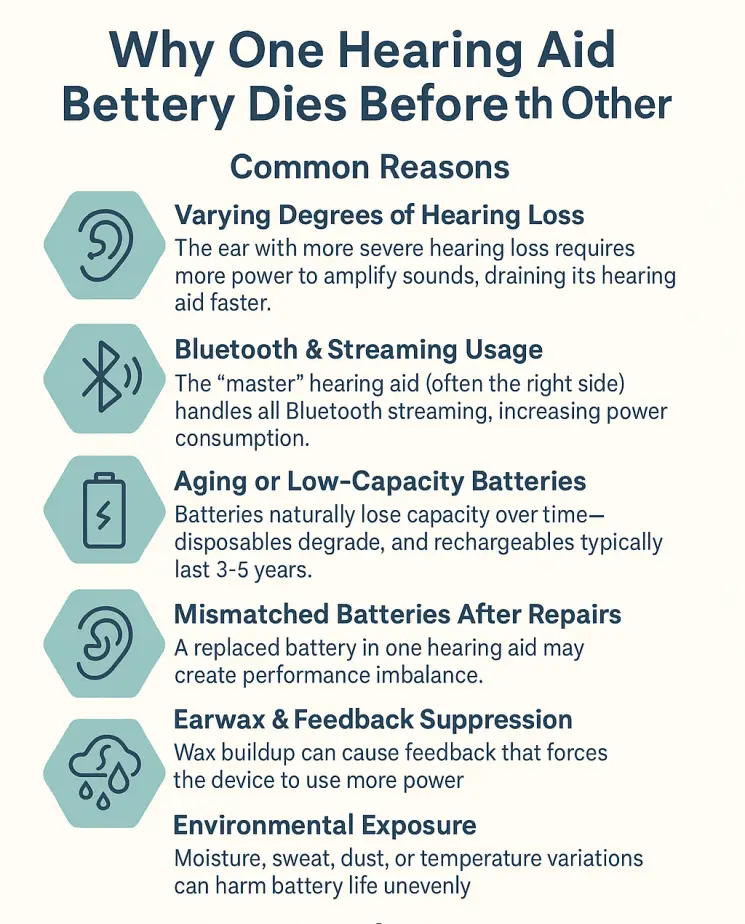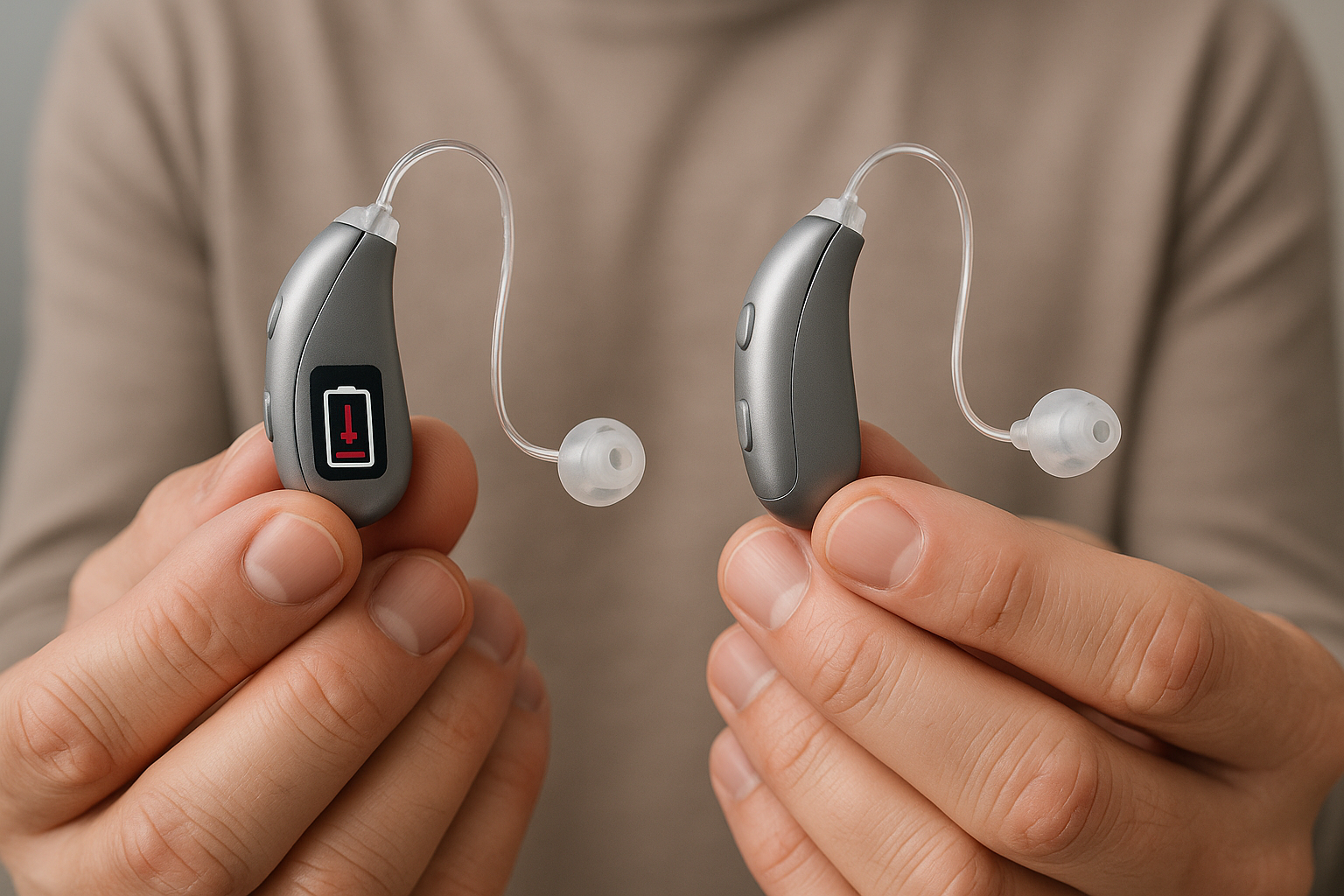
Hearing aids have transformed the lives of millions, reconnecting individuals with conversations, music, and the sounds of everyday life. But many users notice an odd pattern: one hearing aid battery often dies before the other. This can be frustrating—especially if you rely on both devices for clear hearing throughout the day.
As an experienced audiologist, I’ve seen this issue frequently in my clinic. Below, we’ll explore the most common reasons behind this imbalance, how to spot the underlying cause, and what you can do to keep your hearing aids running smoothly.
Common Reasons One Hearing Aid Battery Dies First
| Reason | Explanation |
|---|---|
| Varying Degrees of Hearing Loss | The more severe the hearing loss in one ear, the harder the hearing aid works to amplify sound—draining the battery faster. |
| Bluetooth Connectivity | The hearing aid used for Bluetooth streaming (often the right aid) handles calls, music, and audio streaming, which consumes extra power. |
| Aging or Low-Capacity Batteries | Over time, both disposable and rechargeable batteries lose capacity, shortening run time in one aid more than the other. |
| Manufacturer Repairs | A repaired hearing aid may receive a new battery, creating a mismatch in performance between ears. |
| Earwax and Feedback | Blockages can trigger the feedback cancellation system, increasing battery drain. |
| Environmental Exposure | Humidity, sweat, dust, and temperature differences can shorten battery life in one device. |
1. Varying Degrees of Hearing Loss
Hearing aids work harder for ears with more severe hearing loss. If your audiogram shows a significant difference between ears, expect the aid on the worse side to consume more power. This is especially true in noisy environments, where the device must process more complex sound signals.
2. Bluetooth Connectivity and Streaming
Modern hearing aids—particularly Phonak models—often designate one device (commonly the right) as the primary Bluetooth connection point. This “master” hearing aid streams all audio before sending it to the other ear, significantly increasing its power usage. Minimizing unnecessary streaming can help preserve battery life.
3. Aging Battery Capacity
If your rechargeable aids no longer last all day, or your disposable batteries seem to drain faster in one ear, it could be due to natural capacity loss. Rechargeable batteries typically need replacement every 3–4 years, while disposable batteries can degrade if stored improperly.
4. Repairs and Battery Replacement
If a hearing aid is sent for manufacturer repair, it may receive a fresh battery, creating an imbalance with the other device. In these cases, you may need to proactively replace the older battery to keep both devices synchronized.
5. Earwax and Feedback
Excess earwax buildup can cause feedback, forcing the aid’s noise suppression system to work harder—draining power faster. Routine cleaning helps prevent this issue.
6. Environmental Factors
Exposure to sweat, humidity, dust, or extreme temperatures can weaken battery performance. For example, a hearing aid worn in the ear facing direct sunlight on a bike ride may experience higher power draw due to increased heat.
How to Reduce Battery Life Differences
- Limit unnecessary Bluetooth streaming.
- Clean your hearing aids regularly to prevent wax buildup.
- Store devices in a dry environment when not in use.
- Replace aging batteries at the same time for both aids.
- Ask your audiologist to check for programming differences that may increase power demand in one ear.
Conclusion
It’s normal for one hearing aid battery to drain faster than the other, but understanding the cause can help you take action. Whether it’s due to Bluetooth streaming, greater hearing loss, or environmental factors, small changes in maintenance and usage habits can restore balance and keep both aids running all day.
See more hearing aid repair topics at our Hub Repair page.

